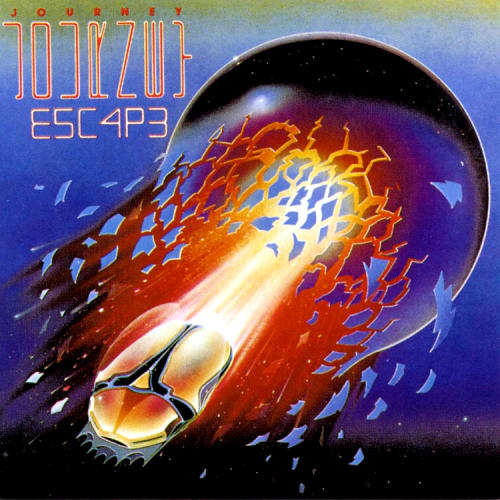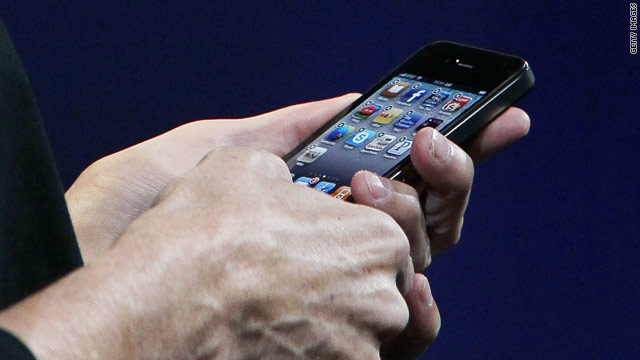Read post 2 here
Read post 3 here
Now what?
Marketers have reached an era when branding has lost some of its mojo. The ongoing excellence of highly targeted marketing tools counterweigh the classic brand by making it possible to drive sales at a sharply reduced cost. Marketers now must ask themselves "what's the best mix of approaches to accomplish our goals?" How do marketers win in a world where they can't expect the brand to serve as the organizing principle?
Marketers must shift their focus from the destination, so to speak, to the Journey.
No, not that Journey
Still the wrong Journey
Now you're cooking with gas
McKinsey Consulting promulgated the concept of the Customer Journey a few years ago as a means for comparing disparate purchase paths. However, it also doubles as a nifty way for organizing marketing communications.
For those unfamiliar with the Customer Journey, it describes a generic sales cycle starting with an awareness of need (Initial Consideration Set), followed by pursuit and consideration of the need (Active Evaluation), followed by the purchase and post-purchase experiences. The Loyalty Loop describes a brand that has so successfully met the consumer's needs that she decides simply to re-purchase the brand rather than to look anew.
If this approach seems familiar, it should. Customer Relationship Marketers (CRM) have been using similar frameworks for years. As a result, it helps to employ some CRM-type thinking to understand how brand fits into the picture.
CRM excels at engaging customers, a subset of consumers who have expressed some interest in a brand. Typically, customers equal purchasers. However, CRM also recognizes interested parties who have not yet purchased, using terms such as hand raisers or prospects. Once consumers signal some kind of interest, CRM can lead the way with addressable media to drive that interest towards purchase and, of course, re-purchase.
In turn, CRM generally employs direct marketing channels with their attendant capabilities for segmentation to enhance their effectiveness. Email, direct mail, addressable banner ads and targeted website modules all can contribute to driving the consumer towards sale. These channels benefit from using data and segmentation to give the consumer the right information or offer that drives her towards purchase. At point of purchase, tactics such as shopper marketing and dynamic pricing can further hone in on the consumer's specific needs.
Where does this leave good old brand advertising?
Direct or addressable marketing suffers from a prominent, but rarely-discussed Achilles' Heel: scale. Certainly, digital addressable channels can serve limitless numbers of impressions at added costs that approach the negligible. However, these channels rarely have the opportunity to deploy that many communications.
From personal experience, I can tell you that most marketers struggle to capture even 15% of their customers' or prospects' email addresses. On top of that, only a minuscule percentage find themselves targeted by tactics such as retargeting, where visitors to a brand's site will find ads for that brand in third-party sites.
Brand advertising brings scale. Yes, it costs a lot of money to reach a broad audience with untargeted mass media, but mass media remain the only opportunity to do so. As a result, marketers should look at branding as a device to feed consumers into a CRM system. Branding should serve as a broad-based call at the Initial Consideration Set shown above and hand off to CRM to begin the process of Active Evaluation.
How should that work, exactly?
For starters, marketers need to appreciate what consumers actually do. Sofa-bound critics of advertising (e.g. everyone) like to dismiss TV commercials by asking others "did it make you get up and buy it?" Naturally, this criterion dooms almost every ad ever made to failure.
Yet consumers routinely respond to TV spots--and other types of ads--by voting with their thumbs.
No, not like that. (RIP, Roger)
Yeah, like that
Well into the second decade of the Web, consumers have gotten used to following up on things that interest them with a quick search or visit to a brand's home page. In fact, with the ubiquity of smartphones, these searches often happen moments after a commercial airs.
See, I told you so
Thus, for one thing, marketers need to align their search engine optimization (SEO), search engine marketing (SEM) and home pages to take advantage of fleeting interest from consumers. As part of that alignment, they need to have clear signals of what the consumer needs to do to learn more.
Such next steps might include dedicated microsites that go into more detail on the substance of the commercials or signups for social media, email or other continuous updates to keep the consumer engaged. In turn, marketers should evaluate mass media advertising on how well it drives traffic to these acquisition vehicles for CRM.
At the same time, the themes, ideas or focus of the brand need not make a complete transition into the CRM process. Once the consumer has expressed interest in a brand, the mechanics of CRM stand a better chance of finding the right offer and timing than the vagaries of a brand.
In the real world, any marketer trying to accomplish his or her goals will need to go into much greater detail than I have over the past four posts. I have yet to address measurement or learning in any depth. However, as a basic framework, the re-alignment of brand and non-brand marketing gives marketers greater flexibility to build out marketing tools as the Customer Journey requires.
At this point, I'd love to hear from my readers any examples that illustrate or challenge what I've written. Whatcha got?





No comments:
Post a Comment